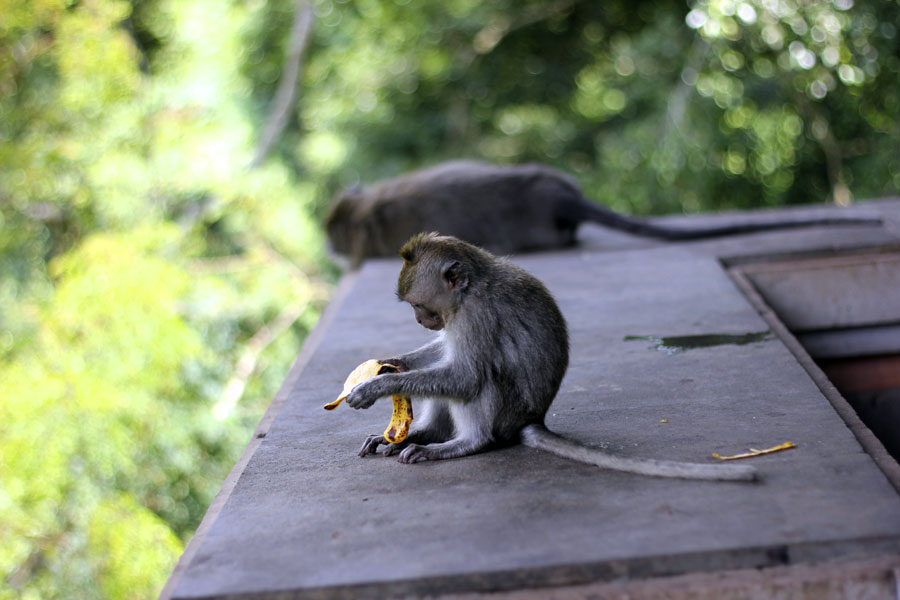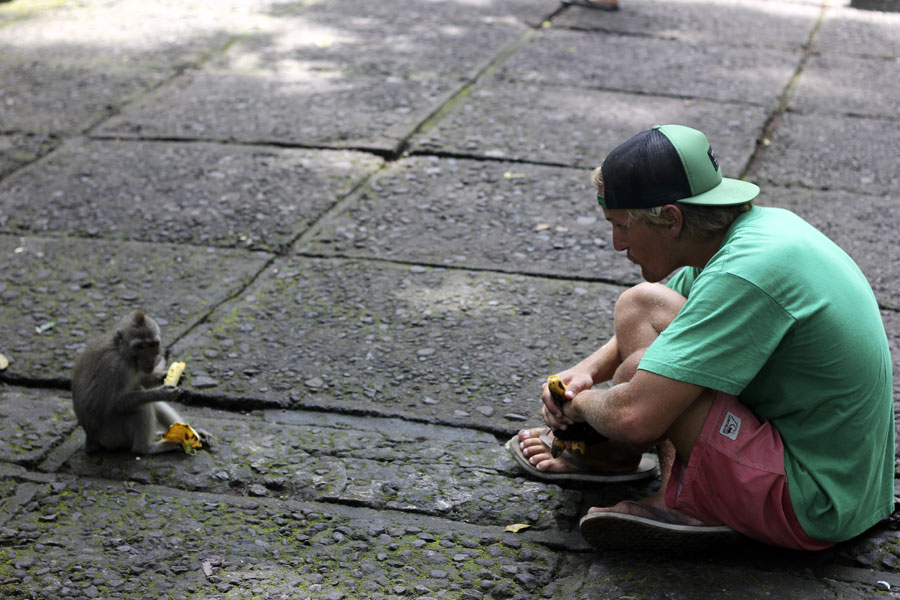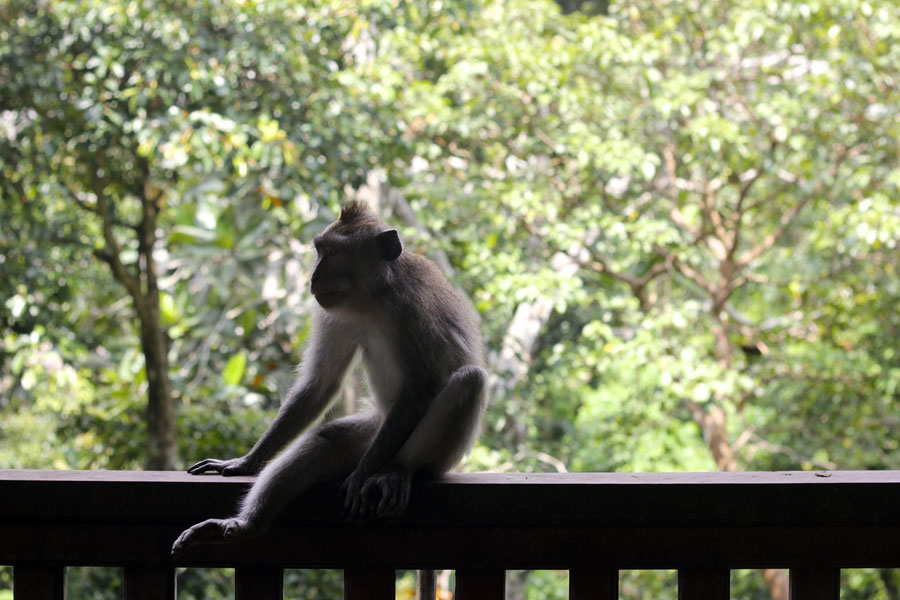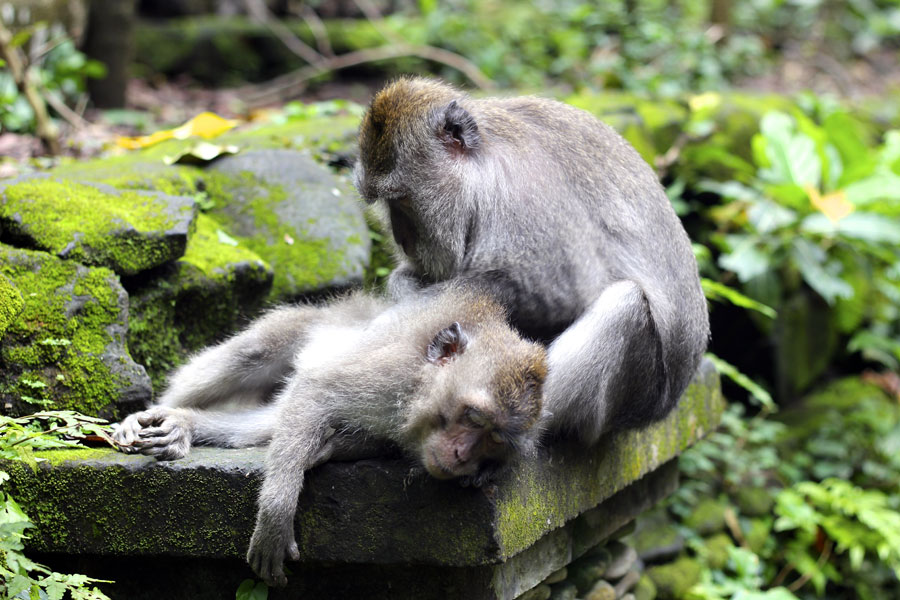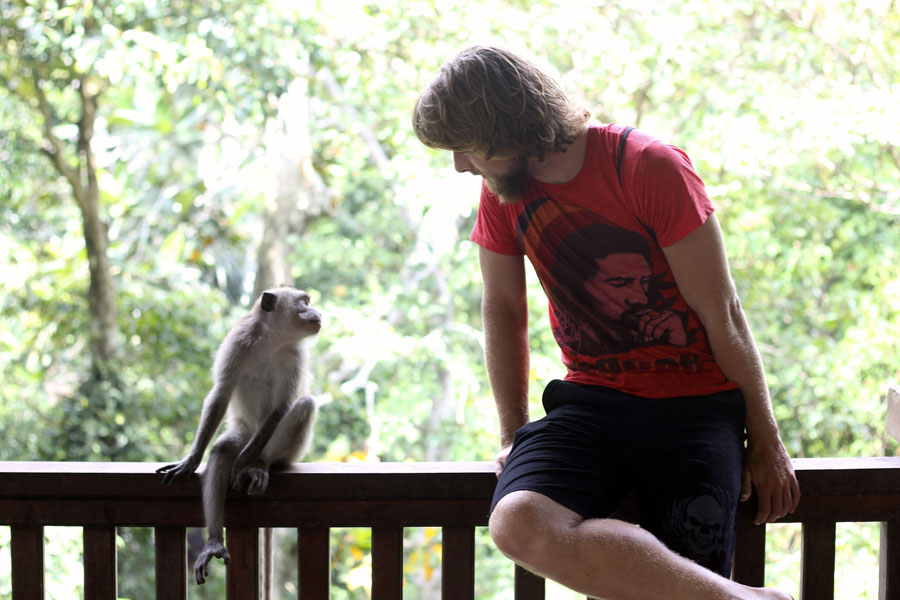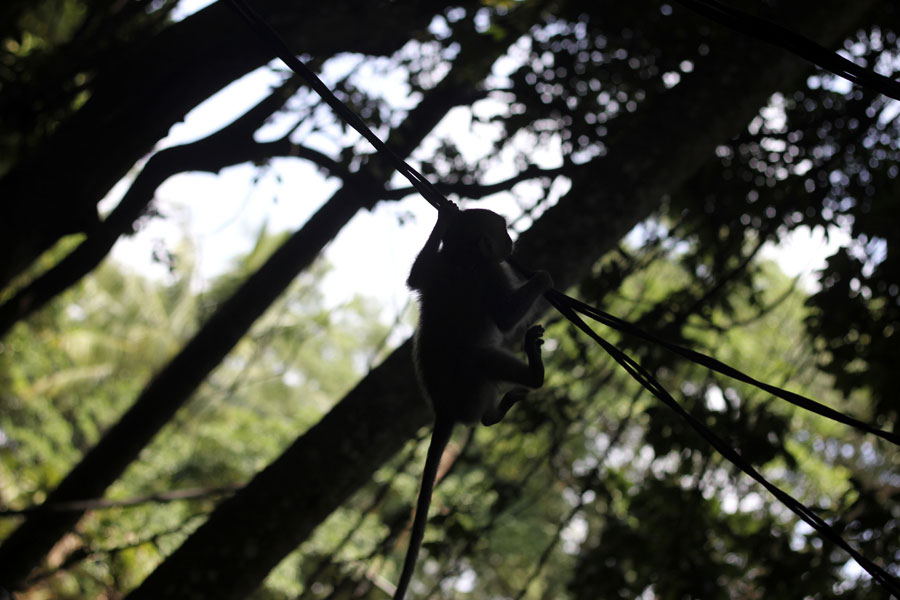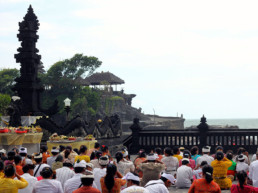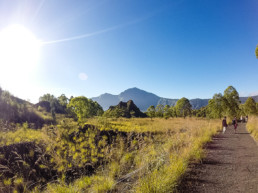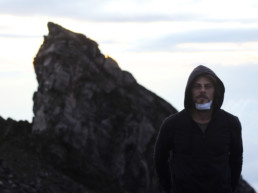There may be no greater pleasure in life than feeding bananas to a baby monkey.
I passed these wise words along to a good friend after stumbling upon a group of the adorable beasts just around the corner from Angor Wat outside of Siem Riep, Cambodia in January 2011. He quickly countered with a few jokes about how stoned I must have been (very), but the sentiment remained strong and true. There’s just something about having a furry little friend crawl up your leg and torso, cross over onto your back and take up its perch on your shoulder – where it quickly unpeels and devours the proffered treats – that makes the spirit soar to new and unexpected heights.
So it was with great joy that I learned there is an entire reserve full of monkeys waiting for bananas in the cultural hub of Ubud on the island of Bali in Indonesia. After 3 years of painfully limited interspecies bonding opportunities, I was more than ready to get reacquainted with the simple joy I had discovered that fateful day in the shadows of the once vast and powerful Khmer Empire.
The Ubud Monkey Forest (full name Padangtegal Mandala Wisata Wenara Wana Sacred Monkey Forest Sanctuary) occupies 27 lush, green acres at the lower end of Jalan Monkey Forest in the village of Padangtegal. Home to over 600 long-tailed macaques (Macaca fascicularis) which are divided into 4 groups that occupy different areas of the park, it is an important cultural and spiritual site that welcomes upwards of 10,000 visitors each month.
The Monkey Forest Sanctuary is actually owned and operated by the village of Padangtegal, with village members serving on a governing council that seeks to uphold the integrity of the grounds while promoting it as a tourist destination. But much more than just a playground for hairy little thieves and their evolution-enhanced admirers, the forest and everything within it are held to be sacred by the villagers. There are several holy sites located within the complex related to the Balinese Hindu beliefs about death and reincarnation, with a surprisingly important role played by the little scamps that call it home.
Pura Dalem Agung Padangtegal – The Padangtegal Great Temple of Death
Occupying the western section of the park, the pura dalem (or ‘temple of death’) is the largest structure found within the forest. Here, the wooden bell (or bale kulkul) summons villagers to the pavilion (bale banjar) for important meetings and ceremonies. The temple’s inner sanctum (bagian utama mandala) houses a centuries-old holy relic in the form of a lingga-yoni, the symbol of Lord Shiva the destroyer.
For the Balinese, death frees the soul for reincarnation – but only if certain rites are carried out meticulously. After a village member has passed away, the body is buried under a headstone in a small clearing near the temple, where it remains until enough money has been raised to perform the elaborate ngaben ceremony. The ritual aims to purify and free the spirit of the deceased. It is sometimes possible for years to pass between burial and ngaben; the ceremony is often the most expensive undertaking a Balinese family must shoulder.
Pura Prajapati – The Cremation Temple
Once the funds are in place, the body is exhumed and ngaben can begin. This takes place at the cremation temple (pura prajapati), which lies adjacent to the pura dalem. The body is placed in a bull-shaped sarcophagus atop a cremation tower and burned, while sacrifices are made to the gods and intricate barong dances are carried out. This releases the spirit from the body, letting it take up residence in the upper world. There is a final seaside ritual known as mamukur which is designed to release the spirit completely, allowing it to then reincarnate in the body of a newborn descendant; however, most Balinese are not able to fulfill this final step.
Holy Spring Bathing Temple
At the northwestern border of the forest is an ancient bathing temple. Accessible by a steep flight of stairs and fed by a nearby stream, it’s used to carry out purification rituals. The villagers consider the waters here to have special cleansing powers, based on the Balinese belief in the holiness of upstream water. After cremation, the ashes and bone fragments of the deceased are immersed in this holy water for cleansing, while funeral-goers take a purifying bath.
The Monkeys
You might be wondering where 600+ monkeys fit in with all of this talk about death and reincarnation, and the answer can be found in the epic Indian poem Ramayana.
In the poem, Sita’s beloved wife Rama is abducted by the evil Rawana. To get her back, he enlists the help of the monkey king Sugriwa and his trusted general Hanuman. Along the way, they are battled at every turn by antagonist monkeys led by Subali who are loyal to Rawana. Eventually, Sugriwa and Hanuman help Sita win the confrontation and retrieve Rama.
Monkeys play a key role in the practice of Balinese Hinduism. Their dual nature is reflected by the poem and as a result, the Balinese both revere and loathe the creatures. This love/hate relationship manifests itself in the monkey forest. On one hand, the village council feeds and protects the monkeys, who are believed to guard the temples against evil spirits; on the other hand, their mischievous nature has to be dealt with on a daily basis, from attacks and bites on visitors to raids into Ubud and the nearby countryside where they steal everything from jewelry to rice.
Though the village council cares for the monkeys on a daily basis, careless feedings by visitors have made the creatures increasingly fat, aggressive and unafraid of human contact. Though the majority of the monkeys look cute and cuddly, it’s important to exercise a degree of caution; these are still wild animals. The little thieves are known to go after anything shiny or edible, so it’s a good idea to tuck away all jewerly, earrings, bracelets and food before entering the park. Numerous bites occur in the park on a daily basis and rabies is a serious concern, so exercise some common sense. If one of the bigger monkeys approaches you, hand over a few bananas no questions asked, and be sure not to tease or provoke any of them.
With that said, the infant monkeys were exactly as I remembered from that sunny day years past: adorable and curious, with an insatiable appetite for potassium which left me grinning like an idiot for the entire morning.
Ubud Monkey Forest Details
The Ubud Monkey Forest costs approximately $2 USD to enter, and bushels of bananas can be bought at the gate for $2-4 USD. The park is easily accessible from most guesthouses and hostels in Ubud by foot, bicycle or motorbike.
Ubud Monkey Forest photos courtesy of Kris Wigley. Check out more great photos, videos and blog posts on the Kris Wigley Travel Blog.
Make your next trip the best one.
Departful is a full service travel agency creating truly exceptional travel experiences that are 100% personalized to you. Wherever you’re going, whatever your interests, we help you plan the perfect trip.
Alex Rathy
Alex is a writer, ESL teacher, baseball enthusiast and Hunter S. Thompson fanatic currently based in Sydney, Australia. He has previously lived in Canada, the U.S., South Korea and China and has traveled extensively throughout Asia. He enjoys hiking, spicy food, dance parties in the jungle, questionable hairdos, Vonnegut novels and has been known to appreciate a good hammock on occasion.


